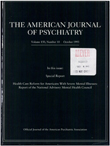Depressive symptoms following stroke
Abstract
OBJECTIVE: The primary purpose of this study was to assess the relation of lesion location to mood and vegetative disturbance following stroke. METHOD: Fifty-two inpatients and outpatients who had had single, unilateral strokes were included. Patients with past CNS or psychiatric disorders were excluded. A modified Visual Analogue Dysphoria Scale was used to allow the inclusion of all but the most impaired aphasic patients. Sleep and eating disturbances were measured by using both self-report and nursing assessments. Location of lesions was determined by CT scan and classified according to three dimensions: right-left, dorsal-ventral, and frontal-nonfrontal. RESULTS: On measures of dysphoric mood and sleep disturbance, results indicated significant three-way interactions among the three lesion dimensions. No differences were found with regard to eating disturbance. Greater dysphoria and sleep disturbance were found in subjects with left parietal/occipital, left inferior frontal, right superior frontal, and right temporal lesions than in subjects with lesions in other locations. Depressive symptoms were not associated with functional impairment as measured by activities of daily living, motor strength, or severity of aphasia. CONCLUSIONS: These results support the hypothesis that lesion location is a valid and significant factor in the mixture of influences which may result in a dysphoric mood state following stroke. The relation between the site of the lesion and subsequent depressive symptoms, however, may be more complex than has been reported previously.
Access content
To read the fulltext, please use one of the options below to sign in or purchase access.- Personal login
- Institutional Login
- Sign in via OpenAthens
- Register for access
-
Please login/register if you wish to pair your device and check access availability.
Not a subscriber?
PsychiatryOnline subscription options offer access to the DSM-5 library, books, journals, CME, and patient resources. This all-in-one virtual library provides psychiatrists and mental health professionals with key resources for diagnosis, treatment, research, and professional development.
Need more help? PsychiatryOnline Customer Service may be reached by emailing [email protected] or by calling 800-368-5777 (in the U.S.) or 703-907-7322 (outside the U.S.).



